Good evening, I’m in charge of security for El Al, do you speak Hebrew?
In the art world, people don’t entirely know what they are talking about. They ask a lot of questions. It’s not that people don’t know what they already know, but rather that they want to know something more in order to do the next thing—and somehow get it right. That’s enough of a reminder that you might have something to say, and that at some point it might make sense. It is in fact those who ask questions who make the entire mechanism function.
The single most interesting discussion I have had about art was not with an artist, curator, critic, or the like, but with an El Al security officer a few years ago when I was detained and subsequently escorted onto a flight to Tel Aviv. I really messed up when I mentioned that I never intended to be an artist. As it turned out, the interrogator was himself an artist, or, more precisely, a cartoonist.
During the flight, I was separated from my laptop. When asked, I didn’t think to mention that it contained a folder of al-Qaeda videos clearly marked as such. Only later did I consider the possible consequences of my curiosities, which would have been more than difficult to justify as “artistic research.”
Are these your only bags? Do you have any weapons or sharp items in your luggage? Is this laptop yours? If I were to look at your laptop, what would I find on it?
I know what I said because I immediately transcribed what I remembered from the series of interrogations as soon as I arrived at my hotel. I have since tried to figure out why I said what I said, which I will try to clarify here in the present tense by returning to the original questions in the form of self-interrogation. Although I was familiar with El Al’s procedures—another red flag for the interrogator—I suppose that what struck me most was that I became annoyed at having the same ritualistic conversations you end up having when participating in art exhibitions.
Where do you live? What sort of art do you make? What are you trying to say?
I have often placed myself in precarious situations in order to access information and images for my work. I have been thrown out of places, been arrested, had cameras confiscated, have faked journalist credentials, paid bribes, and so on. A compulsion? A “research-based art practice”? Well, more the former, supported by the notion of the latter.
Art is facilitated by responsible practitioners that frame art. And artists are often bound to their own caricature. The stereotypes are well known: savant, creative, hysteric, convoluted, contradictory, and so on. However, the institution also has its connotations: mental facility, the state, government, social order, and so forth.
As I write, I will not assume the role of the artist, but more that of a cartoonist. I will enter a state of psychosis for a few days in an attempt to explicate in the form of satire and caricature the notion of “context” and its relation to art, occasionally fluctuating between scientific and clinical terminology (applied arbitrarily).
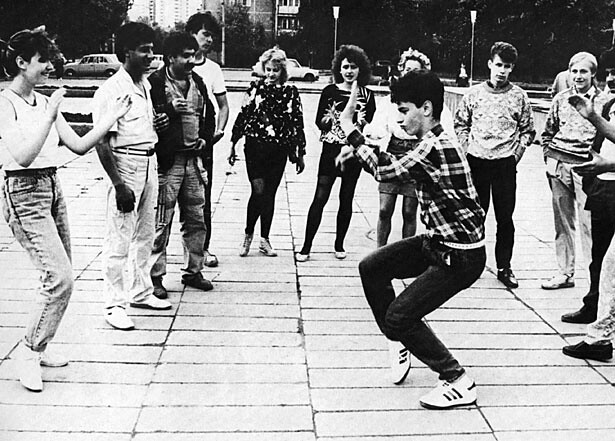

What do you mean you’ve been invited to participate in a conference? I thought you said you’re an artist
As an artist, I generally don’t like to involve myself in discussions about art. More often than not, they exemplify what not to do rather than what to do. They often reveal the way art is instrumentalized. However, in this case I will make an exception and write something.
As I understand it, the format of e-flux journal is intended to generate a new form of discourse. I am always optimistic when I read these sorts of formulations. e-flux itself is a reflection of the art world in which the entire spectrum of production is laid bare. Its organizational structure is based on the simple necessity of disseminating information and is interestingly not bound to contextual framing—conflicts of interest, party affiliations, art magazines, et cetera—and, unlike most of the art junk mail that somehow ends up in my inbox, I don’t automatically delete it. I read some of it.
As e-flux journal has begun to establish some general parameters, broadly concerned with issues surrounding the institution, I would like to mention the immediately relevant questions posed by Tom Holert in regard to the production of knowledge in art that correspond to the growing discussion about “research-based” art practice and its institutionalization.1 I also agree with Irit Rogoff’s comments on the occasional circular patterns in regard to “context.”2
I have recently produced two works that reflexively, if obliquely, address issues related to how I see current art practice, works that unexpectedly border on some oblique form of “institutional critique.” It’s certainly not a category or designation I would want to end with, but something that simply happened, and I would like to attempt to identify the short circuit.
Concrete thinking has led me to believe that the recently applied designation “research-based” artist is possibly appropriate. The next in a series of terms applied to my practice. Of course, such terms are necessary to rationalize art; typically, however, when such terms are applied I try and circumvent them and do something else.
I recently conducted a form of research on “research-based practice”—my own—and would like to explain the hypothesis and outline some subsequent results so they can be held up as a specimen for analysis. I will try and explain in plain language, not the language that gets confused in the real world, the sort of words automatically corrected by Microsoft Word. The word I got tangled up in was “context.” I will explain how it happened.
What I will attempt to underline should serve as something of a potential warning to designations such as “research-based practice.”
I am curious myself. Does it give ammunition to the notion that research-based practice should be institutionalized? That I should be institutionalized? Or re-institutionalized? After all, isn’t the artist as incoherent psychotic generally the most acceptable practice? More seriously, the practice of art is not confined to finality. It is centered on questioning rather than illustrating, self-reflexive without guarantee, and, as any material practice, open to the possible consequences.
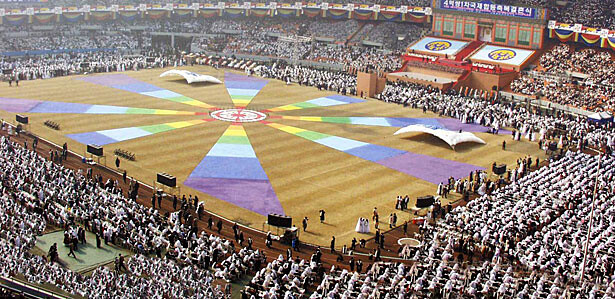

Why do you do it? What are you trying to say?
I was late sending the signed documents to the institution. The art institution. But I did have an excuse this time. The Fed Ex plane crashed at Narita this morning.3 That is an unfortunate fact. It was very windy last night. I was not expecting anything. But other people were expecting something from me. And it will be delayed. Because plane accidents are more important than discussions about art. Than anything I do. And I can talk about plane accidents. I can talk about the different models and types of planes, which airlines, the dates. But it’s up to journalists to check facts.
Then there are art journalists. And they understand what they understand. And that’s good. But sometimes they try and explain things they don’t really understand because sometimes they speak about politics. And they confuse other journalists.
While I am writing this text, I am listening to conservative American talk radio online. Not because I like it, but because it is annoying. People talk. And talk and talk. And it presents itself for what it is. But sometimes the host has something funny to say. For example, “Even a blind squirrel can occasionally find a nut.”
As art has an increasing interest in other disciplines, it seems to attract people who have little more to say than to insist on their imaginary roles in the institution. They just talk, telling us who said this about what, and so on. And they have increasingly more to say. Based on what others have to say. And will keep talking. Until you remember. Demanding more discipline or the Bologna Process. Because anyone can get away with anything in art, if one is insistent enough. And it’s precisely this sort of “discourse” that often leads me to question the discourse itself.
Here in admission of my own gullibility, I’ll diffuse some of my comments.
As a kid I spent hours a day listening to short-wave radio. Particularly the English-language broadcasts from socialist countries. One host named Vladimir Posner, who spoke with a perfect American accent, was particularly convincing. I also had a subscription to a magazine called Soviet Life. I found everything very impressive, so much so that when I was thirteen I went to the Soviet Union in a student exchange. I remember being in Leningrad, sitting in two groups, drinking bottled lemonade and discussing politics with well-versed Soviet students who were intent on convincing us that their system was better than ours. After explaining the capitalist system to us, they invited themselves to visit us in the United States. It was a bit unexpected. When we left the building where the conference was held they threw a dead pigeon out the window at us.
Much the same confusion predominates in the art world, whose idealism wouldn’t exist without a basis.


I thought you said your work includes photography. Why don’t you have camera equipment with you? There are many interesting things to photograph in Israel.
“All works of art are objects and should be treated as such, but these objects are not ends in themselves: They are tools with which to influence spectators” (Asger Jorn).
Topicality creates the expectation that theory and politics can be enforced through art. But art is not propaganda.
Let me give an example of the arbitrary nature of what might be misconstrued as politics. Imagine that you are watching television. And you are following the capture of Saddam Hussein. Not actually following Saddam Hussein, but watching it on television and reading about it on the Internet. You are curious. Incidentally, you notice near the television a book with the title The Dictatorship of the Viewer. And you, the “irrational” artist, invert it. Viewer of the Dictatorship. Knowing you exhibit in the art world. And it will be inverted again. Viewer of the Artist viewing the Dictatorship. And you the artist are aware of the implications.
A few years later it finally happens. You cause the media to speak to itself. Nonsense. Feedback. And it tells you what not to do next.
I recognized the journalist. He was from CNN. He had a lot of makeup on. More than I realized he had to wear on television. He was in my exhibition in the institution. He wants to talk about my exhibition. I tell him I want to talk about the show. I mean his show. I tell him I watch his show. But he is talking about my exhibition. I tell him I can talk about the subject of what’s in the exhibition but it will take a while. But I would rather talk about the subject of his show. But he wants to talk about journalism. Then I tell him, so let’s talk about his show. But he still wants to talk about my exhibition.
While preparing for the camera he asked: what is the purpose of your work, again?
I had to come clean and explain my intent. The exhibition is an attempt to collapse all meaning of the subject, it is about the futility of representation. To make you think about the subject you see. About what you already know. To look again in the real world. Nothing more.
The consequences were productive. I’m not exactly talking about ethics, but I realized everything had come full circle. For a moment I was able to use art to cause distortion in the media. To occupied space. But I also knew there was something wrong.
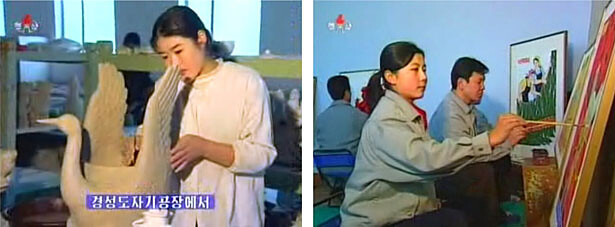

So where can I see your work? In international media, do you mean like magazines? Do you have examples of your work with you?
Dictated by new formats, there is amnesia that art exists in a particular time and space. The often archaic processes of the art world are unable to articulate the practice. Unable to keep up with cutting and pasting itself into the present, the Internet is a quick reference tool for art professionals, giving the illusion that art can be comprehended without seeing it.
I can talk about “dematerialized” art because I have seen it in books. But I never experienced it. Conceptual art was communicated by means of postcards, faxes, and magazines before I was born, and I read about it years after it was made.
The mechanisms and conventions on which the art system relies are in fact real. There are institutions, galleries, critics, publications, and so on. A lot of wasted paper and thought goes into the mechanization of cultural production, providing evidence that ideas were exchanged, and often the illusion that they were communicated.
What do you mean? What is the myth of Bauhaus in Tel Aviv about? Why is it a myth?
How can art negotiate its own means of mediation? How does the physical art space relate to the quick dissemination of information? How much of that discourse is nonsense? You can hope that at least the facts of the subject of research are checked.
Not an accusation, but an admittance of operating on the wrong frequency. Which can go nearly undetected. The slight incisions into the cultural fabric are more evidence of what not to do. My temporary conclusion has been not to update information about production. Ignore it and let it reside in a system that generates itself. Let meaning disintegrate until it collapses and can be made into a subject of its own.
To let information operate parallel to art in order to let me know something about the subject. Something I don’t already know.


Where did you study? What did you study?
The art world sometimes seems more like school than school itself. So it’s logical that the discussion about education arises. I have basically gone from one institution to another, that is, from art school to institutionalized professional art practice. I have long taken exhibition thematics as serious propositions with potential. And when the subject is based on a secondary or non-existent notion, I make it into the subject itself. In some cases I have produced work simply to see what happens, then I determine its function and go from there. When I can’t detect what the intent of the exhibition is, it’s an opportunity to try something, to experiment.
Have you ever visited a synagogue?
The rituals of participation can be pretty grotesque. They can be worse than school ever was. You don’t want to go to the art bar. You want to go to a real bar. You have to go to the same fucking Italian restaurant the second night in a row because one artist is vegetarian, and a bad artist. A slobbering artist can’t concentrate anymore on your conversation because an important curator walks in the door of the exhibition. You get introduced to someone you’ve known for ten years because the person wants them to know that they know you.
More artists stealing the banners, slogans, and balloons from protesters until there is no longer protest. And disciplinarians speak about protest, because art allows them to. And artists do it, because they were told to do it. Another whining artist waiting for a crate with his art to arrive. He opens it and it’s another neon. It looks like the neon in the last exhibition but it says something slightly different. Another slogan about non-conformity. He’s talking about how he got the idea from Deleuze while eating a cone of pistachio ice cream. Another moron does some “social design” that everyone is forced to sit in. Otherwise you have to stand all night and look at it.
An artist from a country where you went to do a project asks you to give an interview for his magazine. You say sure, but you tell him to first read a text. Where you got the idea to start the project. The text was written by an architect. A theorist. The artist doesn’t write back. He publishes the article with the photograph you took to illustrate the text. Uncredited. The same artist goes to the same place you did the project. And does the same thing, in a different way. His version. There’s a monument to the country he immigrated to in his own country. So he makes a video of the monument of the country he immigrated to in his own country. It’s a better project.
A curator shoving a card in another curator’s face interrupts your discussion. Talking about her plans to do an exhibition of Hungarian artists in Turkey. You ask if the title of the show will be Hungary Turkey. You are serious. She thinks you’re a lunatic. Why not? Her card is from an American-supported foundation. Because you read it and know who taught her to shove cards in people’s faces. And you somehow feel responsible, but not really.
You should exploit your background. Scandalize and provoke. Politely.
Recently an art historian proposed that Van Gogh did not cut off his own ear, that it was likely the result of a fight with Gauguin, who threw a glass at him. This came from a researcher looking carefully through existing criminal documents. They have been there for more than a hundred years, while the fictions have been made.4
Where did you meet? How long have you known each other?
But experience goes along with it. There are interesting people in between, so it’s worthwhile. Like school. And then you get institutionalized, in art institutions. So you have different responsibilities. You have to talk. A lot. About yourself. And they send you a press package with what they have to say, and you read it because your work is about media and you’re curious about what the media writes about your work. “Is interested in this …” “Examines that …” You read it and you think, what the hell? That’s not what you were thinking—at least not what you thought you were thinking. And the facts are all wrong.
Do you have any Jewish relations or has anyone in your family immigrated to Israel?
I’d rather speak Japanese to someone who might understand the second or third time I repeat what I’m saying, than with someone who simply will never understand what the hell I’m talking about with art. But if they are not involved in the art world, I try to explain.
Last year I went through the process of Japanese immigration. Japanese immigration is very strict. There are twenty-seven classifications for visas. I gave them too many documents and they were confused. They were unsure whether I was applying for cultural purposes, humanities, or what. It was kind of a surprise when the immigration officer said, “But your last visa was from an institution. It says you are an artist. Can you prove that?” On a technicality I qualify for permanent residency.5 I suddenly was reminded I’m an artist.
Say you decide to start a center in Ukraine together with some academics in the university. There was a Soros center, but now they complain about funding for art and that’s understandable. But when they get it they don’t always use it for art. And that’s understandable too. You don’t want to start another art scene, you just want to do something with what you know because there is no contemporary art, at least as you understand it. There is a new private museum, with animals behind glass. I mean the art. It’s part of a shopping mall. It’s decadent and amusing. At least people get more interested in art.
Then you talk with someone you know in the art world who is also interested. He is the editor of a magazine. A real magazine you read in art school. He had a similar idea and you realize you might be able to do something together. A lot of people get interested in the idea. Suppose the University has a film archive with more than 5000 16mm films and they belong to the center you started. They would have been thrown out if you hadn’t organized them and put them on shelves so they can be screened and edited. You know you can’t watch them all. You don’t want to do an art project with the films. You just want to watch them. And invite other artists to make art projects.
You know that all the formatting problems of the art world you’ve encountered for years can be solved with one cheap media player that is made in China that you can get on the market for seventy dollars. It plays everything. You’re in Ukraine and there is no formatting, as you know it. You can get new pirated software as soon as it’s on the market, the black market, where there’s no formatting.
You end up speaking with people about “context” and they don’t know what you’re talking about. So you have to explain and explain, and in the process it starts to make sense, maybe not to you, but to them. It sounds convincing, and then maybe you can make some meaning out of that for yourself. So you try and do something with what you have learned—what you always understood as “context.” It might fail, but so what?
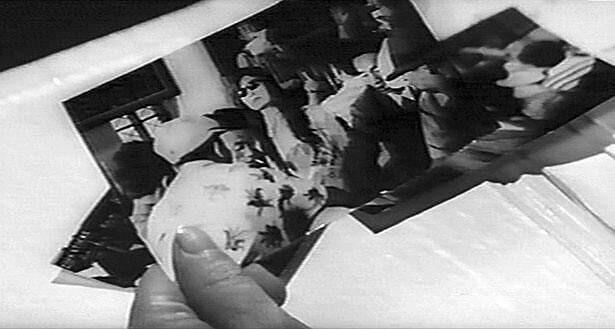

How long have you had it? Has it been in your possession all the time?
Back to the art world. I have had interesting discussions with other artists who have also worked with the same subject and I have spoken with art journalists who don’t know the difference between North and South Korea. But the journalists like the idea of North Korea.
I could use North Korea as a sort of metaphor for the art world. Not the politics and horrific conditions that exist in the country. They are real. Not to bring “awareness” to the art world. These things I can’t change. I am not delusional. Let me be clear here, not to sound irresponsible. I am referring to the circulation of information. I am thinking of the insularity of the country. This is a metaphor. Or concrete thinking.
For example, you can take someone’s statement, de-contextualize and reframe it so that it might sound as if it applies to the Bologna Process:
It has trained a large number of revolutionary talents in the crucible of the arduous revolutionary struggle, thus successfully playing a pivotal role in carrying out the policy of training native cadres and the policy of intellectualizing all members of the society, and actively conducted scientific researches, making a great contribution to the development of the nation’s science and technology.
But it’s not. It’s from the other day. Kim Jong-Il visiting a new swimming pool at a University.6
A short anecdote, related to Liam Gillick’s research on the experimental factory.7 I am reminded of an incident that speaks to the fate of all good intentions: in the 1970s, Sweden’s Social Democratic government sent a few thousand Volvos to North Korea on the trust of the Swedes. The North Koreans just ripped them off and never paid for the cars. They are still on the streets in Pyongyang.8 An important consideration here is where the production ends up. Who accumulates the knowledge? Who is producing what for whom? Will you get back what you give?
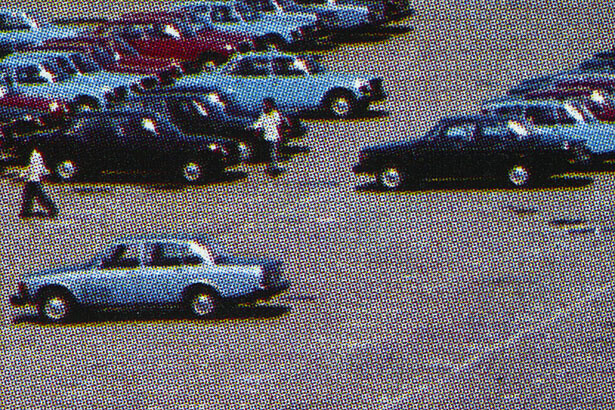

Once again, my interest is nothing new. When I was a teenager I listened to Radio Pyongyang. It was again the interestingly contorted language. Propaganda. North Korean State Television edits the outside world into a surrealistic and alien spectacle with consistent themes: war, accidents, natural disasters, intimidating technology, worldwide protest, extreme physical activity and endurance, and so on. Appearing once a week towards the end of the news report, following the perfunctory fifteen to twenty minutes of praise of Kim Jong-Il and reports on his daily activities, the program is called “News of The World.”
Without realizing that you have nearly become a thematically programmed production zombie, you start to listen to yourself repeating yourself. Cynically. You realize this when you are talking to students about how to do the same. You sound convincing because it’s what students expect. Because you have experience. And then you have to catch yourself and tell them what you are thinking. Because that’s more useful.
In another city for yet another reason, I ran into Stephan Dillemuth by coincidence, in yet another academy with yet more students. But these students were different. The same fantasy I had in school of the art world. I felt like I was finally back in the real art world. The art world of the Akademie that I read about in art school. The illusionary, bohemian, delusional, real art world of art. Where everyone reads faked scripts, wears costumes, and talks incoherently. I have recently found myself wandering around the art supply store looking at paint materials.
At the end of the night I had to leave and go back to the institution. The art institution.
Anyway, here is where I would start to identify the short circuit. I often found that the notion of “context” doesn’t necessarily translate. The further off and more “peripheral” the places I exhibited, the less knowledge there was about “context.” But I could still discuss the subject of the research. And then I might attempt to explain “context” and its considerations.
Or maybe it’s simply a disorder. I am, in fact, a savant. I have Asperger’s syndrome. And I can remember a lot of information. I can archive. And it can be a fucking intricate mess. And I can present it as art.
Not that the subject of archiving is not interesting. I just can’t read another concept based on another concept for yet another exhibition about archiving. It gives me a headache. And the idea of more curators archiving concepts of other curators archiving artists to archive the notion of the archive is annoying. So is the idea of more and more artists digging through more and more archives as another pretext for another exhibition.


To try and understand what the hell I am doing I look at Walter Benjamin. Not in his archive, but in a book. By someone who researched his archive, and edited it. His list of seemingly meaningless pictures and notes is justification. The mistakes, what is crossed out, misspellings, diagrams, notes in the margin. Constant revisions. Editing. Something more idiotic than the last thing I have archived for whatever reason.
“The knowledge of truth does not exist. For truth is the death of invention”.
—Walter Benjamin
Architecture is not politics. A photograph of a building is not politics, but it can generate readings. I have never attempted to make political art. I have made art informed by politics in terms of the narratives and visual surfaces ideology produces. I have never inferred the notion of truth. In fact, I have worked with distortion, played with presentation implying truth. I passed through a matrix of contradictory forms that imitate authority, and alluded to the problems and failures of representation.
Artistic experimentation, whether presented as research or not, precludes an outcome—a conclusion or a statement. It is entirely reliant on the dismantling and framing of a given subject matter.
This situation of self-correction reminded me of the regime I was once seduced by. I caught myself going all the way back to when I was about sixteen. On the premise of producing an art project, I bought the issues of Soviet Life that I had received with my subscription at that time. When the magazines arrived, I realized I actually just wanted to re-read them and see what I could remember. One article in particular has an interesting series of images. They contradict the current situation in Byelorussia. It is even optimistic in a twisted way. And I remember the photo from when I was sixteen years old.
Concrete thinking makes me consider the art world though metaphors in order to make it seem rational so I don’t have to spend all my time in the institution. I mean the art institution. So I can exist in the real world. I learned in school that you can always walk out of class when you don’t like it.
So is it your main profession? Who sells your artwork? Who buys the artwork?
There is not one instance in which I have been turned away from approaching another discipline for source material. Occasionally I have been altogether stopped, and probably for good reason. Yes, much of the language of “context” remains largely untranslatable for a broader society (depending on where you are), but people do know what art is. First there is skepticism, as most people have preconceptions. Followed by explanation. At the end, when they see what you have done with what they entrusted you with, it often comes as a surprise. The result informs their discipline. In these cases it is successful. But that’s the point where it’s often useless in the art context.
What is often forgotten in discussions about “research-based” art practice is that it cannot simply be reduced to research. To do so is to forget what art can do and what research can’t. Art makes the form the site of knowledge. Without rejecting the content. It is art itself that delineates its own borders.
Here again, I see possibilities for the notion of hijacking art. If you can convince someone that art is intangible, it can act as a stand-in for something else. And then maybe you can get something done with it, inside or outside any discipline if that is in fact what you want.
I first learned this a few years ago from two El Al interrogators and a curator. Who works in an institution. An art institution. One of the interrogators was skeptical about whether I was an artist when he called the curator on the telephone. The curator later told me that the interrogator was also a cartoonist.
“I am particularly interested in how issues concerning the actual situations and meanings of art, artistic practice, and art production relate to questions touching on the particular kind of knowledge that can be produced within the artistic realm (or the artistic field, as Pierre Bourdieu prefers it) by the practitioners or actors who operate in its various places and spaces. The multifarious combinations of artists, teachers, students, critics, curators, editors, educators, funders, policymakers, technicians, historians, dealers, auctioneers, caterers, gallery assistants, and so on, embody specific skills and competences, highly unique ways and styles of knowing and operating in the flexibilized, networked sphere of production and consumption. This variety and diversity has to be taken into account in order for these epistemes to be recognized as such and to obtain at least a slim notion of what is at stake when one speaks of knowledge in relation to art—an idea that is, in the best of cases, more nuanced and differentiated than the usual accounts of this relation.” Tom Holert, “Art in the Knowledge-based Polis,” e-flux journal, no. 3 (February 2009), →.
“And so the art world became the site of extensive talking—talking emerged as a practice, as a mode of gathering, as a way of getting access to some knowledge and to some questions, as networking and organizing and articulating some necessary questions. But did we put any value on what was actually being said? Or, did we privilege the coming-together of people in space and trust that formats and substances would emerge from these?” Irit Rogoff, “Turning,” e-flux journal, no. 0 (November 2008), →.
See “Deadly plane crash at Tokyo airport,” CNN.com, March 23, 2009, →.
See Bärbel Küster, “Wir müssen einen Schnitt machen,” Süddeutsche Zeitung, February 24, 2009, →.
See “Guidelines for Contribution to Japan,” Immigration Bureau of Japan, →.
See “Kim Jong Il Provides On-the-Spot Guidance to Newly Built Swimming Complex at Kim Il Sung University,” Korea News Services, March 19, 2009, →.
Liam Gillick, “Maybe it would be better if we worked in groups of three? Part 2 of 2: The Experimental Factory,” e-flux journal, no. 3 (February 2009), →.
See Volvo Car Corporation, “75 Years of Volvo Taxis,” press release, 11 March 2005, →.
Category
Subject
A Chinese translation of this text has been published in issue #6 of Contemporary Art & Investment.
本文的中文版发表在当代艺术与投资 第六期上.
